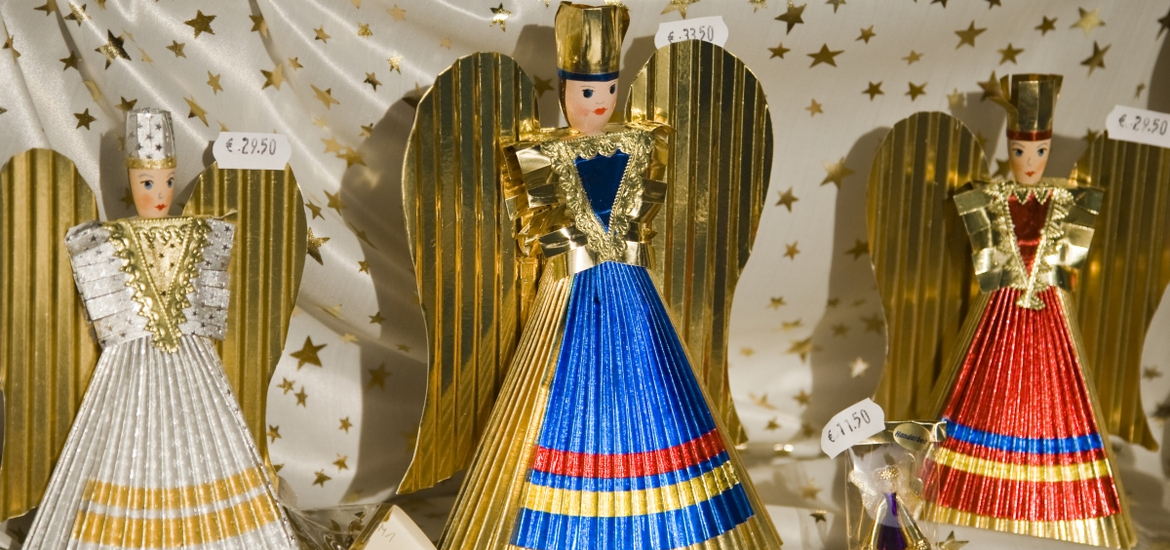The Nuremberg "Christkind" the form of an angel
If you go in search of the origins of the Nuremberg gold foil angel, you come across the metal making handicraft, which made Nuremberg both famous and prosperous many centuries ago. The wings and a robe of the gold foil angel, described for the first time in the year 1733, were made of pound brass less than 1 mm thick. The quiet shimmering of this delicate material also led to the name of gold foil angel for his small treasure. From the middle of the 19th century, colored paper, and later metal foil, replaced the gold leaf substitute.
Many legends are caught up with the creation of the Nuremberg gold foil angel. One of the most moving tells the story of a Nuremberg craftsman who couldn`t get over the death of his daughter. One night she appeared to him in a dream as pretty as an angel, and in a golden dress. To keep this memory alive he created a golden doll made of metal, the first gold foil angel. In the Nuremberg Christmas tradition, his figure is also a symbol for the Nuremberg "Christkind", the story of which is told in another tale.
